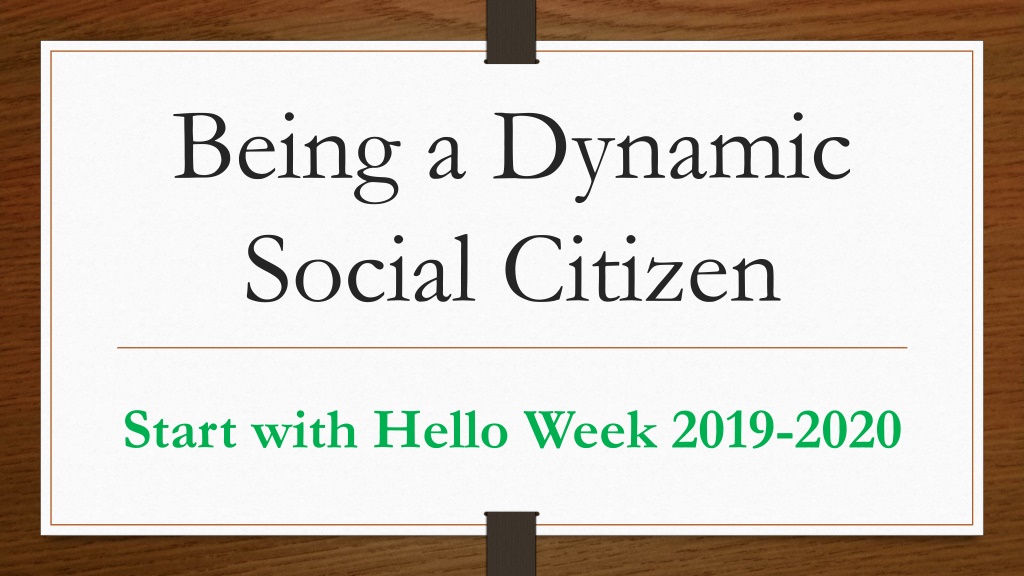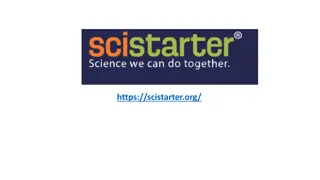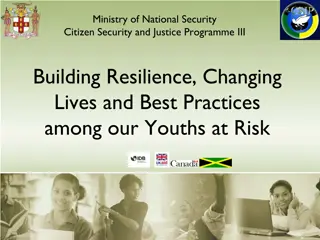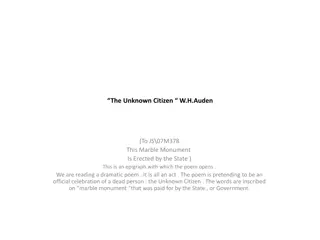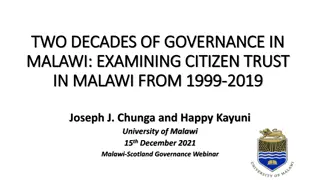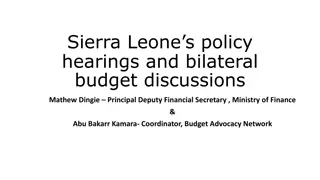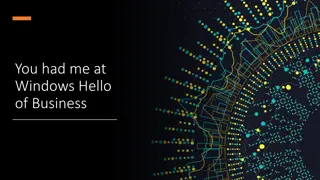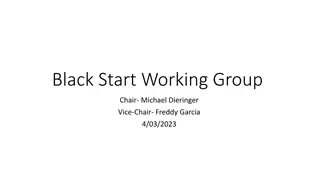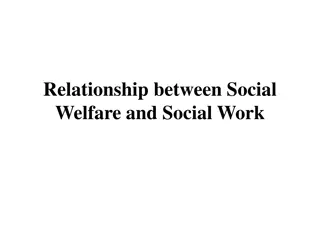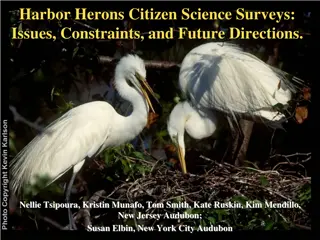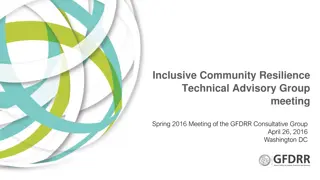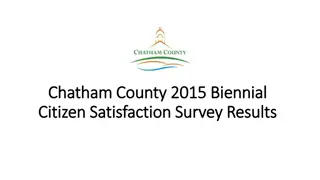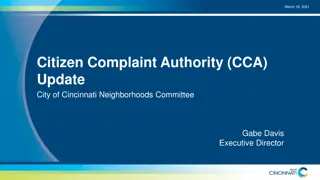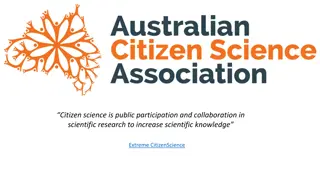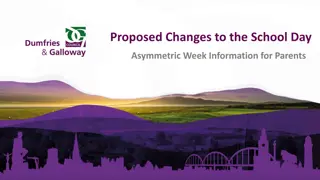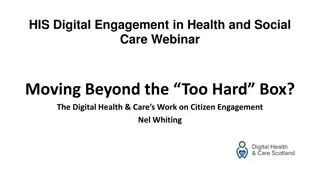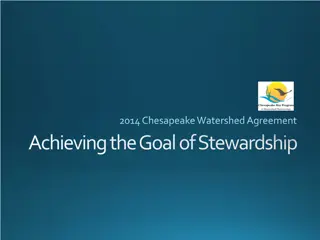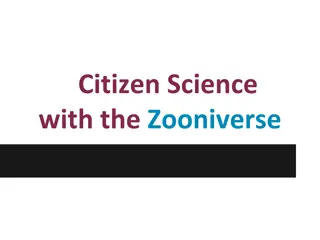Being a Dynamic Social Citizen: Start with Hello Week 2019-2020
Why is being a dynamic citizen important? Learn how connectedness can positively impact behavior and success in school. Explore key definitions like "Connectedness," "Dynamic," "Social Citizen," and "Inclusive," and discover a three-step guide on becoming a dynamic citizen by recognizing when peers need support, being inclusive, and inspiring positive actions. Let's break down the strategy for dynamic social citizenship.
Download Presentation

Please find below an Image/Link to download the presentation.
The content on the website is provided AS IS for your information and personal use only. It may not be sold, licensed, or shared on other websites without obtaining consent from the author. Download presentation by click this link. If you encounter any issues during the download, it is possible that the publisher has removed the file from their server.
E N D
Presentation Transcript
Being a Dynamic Social Citizen Start with Hello Week 2019-2020
Why is being a dynamic citizen important? Young people who feel a sense of connectedness are less likely to engage in negative behaviors (such as bullying, vandalism, violence, or drug and alcohol abuse) and more like to be healthy and successful in school. Dynamic social citizens can create connectedness to improve the quality of life in schools, communities, online, and around the world.
First, a few key words and definitions we will be utilizing in our discussion today. Connectedness A feeling of belonging to and being valued and supported by a person or group. Dynamic Active, energetic, and causing change Social Citizen A person who acts to improve the social climate and quality of human interaction in his or her community and the world at large. Pay it forward To repay someone for a good deed or act of kindness by doing a good deed or act of kindness for someone else. Social Circle A group of friends who spend time together and may share certain values, beliefs, or interests. Inclusive Acting to include and engage everyone.
How to become a dynamic citizen In 3 easy steps
Step 1 Recognize when peers may need support, due to issues at home (family or financial issues) or school (academic relationships or social issues) Just do ONE simple thing: notice. Notice when peers need help or support.
Step 2 Even if peers are outside your social circle, be inclusive by offering to help or listen, or by inviting them to a club, activity or social event. Say: I know we don t usually hang out, but do you want me to come with me to _____?
Step 3 If your peers pay it forward, who know how far your positive actions will spread? Hopefully, your acts of social citizenship will inspire your peers, if they thank you or ask how to repay you, encourage them to pay it forward.
Lets break it down! Lets take a closer look at each of the 3 steps in the strategy you just learned for how to be a dynamic social citizen.
Step 1 break down Recognize when peers may need support. Being a dynamic social citizen , someone who actively works to bring positive change and create connectedness in his and her community and the world, sounds like a really daunting task. But to get started you only need to do one simple thing: notice. Notice when your peers may need your help or support by recognizing when they show these clues: crying, mood swings, withdrawing, appearing tired, run-down, stressed or distracted; or acting in a way that is very unusual or out of character
Step 1 break down continued Sometimes the clues you notice in others might just be due to them having a bad day or dealing with normal, everyday problems. Other times, your peers may be facing more serious issues (like the ones listed to the right). You never know what another person is going through so it is important to look out for each other and help when you can. Family Issues: financial problems, job loss, physical or verbal abuse, divorce, addictions, family illness or death. School Issues: learning disability, poor grades, behavior issues, or problems with authority. Relationship Issues: break-ups, abuse, bullying, problems fitting in, negative social pressure or risk-taking.
Step 2 break down Be inclusive to peers outside your social circle. Although you can t solve the life problems that may be causing your peers stress, you can help them feel connectedness at school, a feeling of belonging and being valued and supported. Connectedness may not sound like a big deal, but it actually can change a persons whole life. The Center for Disease Control have found that students who feel connected are less likely to get involved with drugs, alcohol, gangs, violence and risky behaviors, and more likely to get good grades and stay in school.
Step 2 break down continued It is pretty easy to create connectedness with your friends, because you know them and care about them. But when you reach out to people outside your social circle who may not have a strong network of friends and are in need of help and support, you can literally change someone's life. Although it may seem weird or awkward to talk to someone you don t know that well, its really not a big deal. First walk up to the person alone so he or she does not feel intimated. Then say something like Hey, my friends are I are going to the movies tonight. I know we don t normally hang out but do you want to go? Its that easy!
Step 3 break down Ask your friends to pay it forward. You might never really know if your attempts to create connectedness truly helped another person. Hopefully, the person you reached out to will feel better, but he or she may not talk to you again about the situation, due to being embarrassed or simply not knowing what to say. And that s totally normal. But if the person you helped does thank you, you can simply say: Just pay it forward Paying it forward means when a person does something kind for you, you then do something kind for someone else.
Step 3 continued Now that you know how to create connectedness, you're probably wondering...what's in it for me? First, there is the obvious benefit: helping others feel good. When you help someone outside your social circle, you'll feel good knowing you did the right thing and made someone's life better. Secondly, when you act as a dynamic social citizen, the person you help is likely to pay it forward sometime in his life by helping another person. Who knows how far the ripples of your actions will spread? Even just one small action to create connectedness can help shape your school, community, and world into a kinder, more accepting place.
Being a dynamic social citizen online Messages shared online spread so quickly that you can truly influence the whole world with just one click. Use that power to improve the world by being a responsible digital citizen in the following ways. First, think of how your posts may affect others feelings and don t post anything you wouldn t say face to face. Respect the privacy of others by not sharing embarrassing photos or forwarding private messages without permission. And of course, work to spread positivity and peace online, not hurtfulness and hate.
Get out there and change the world! I hear you..me? Change the world??? Yeah. Right. BUT DoSomething.org may just prove your wrong. Visit today to see young people making a real change on a global scale. With over four million members (and counting) DoSomething.org is the worlds largest non-profit for young people and social change. On their website, you can search for ways to be a good social citizen based on the causes you would like to support, such as anti- bullying or the environment.
